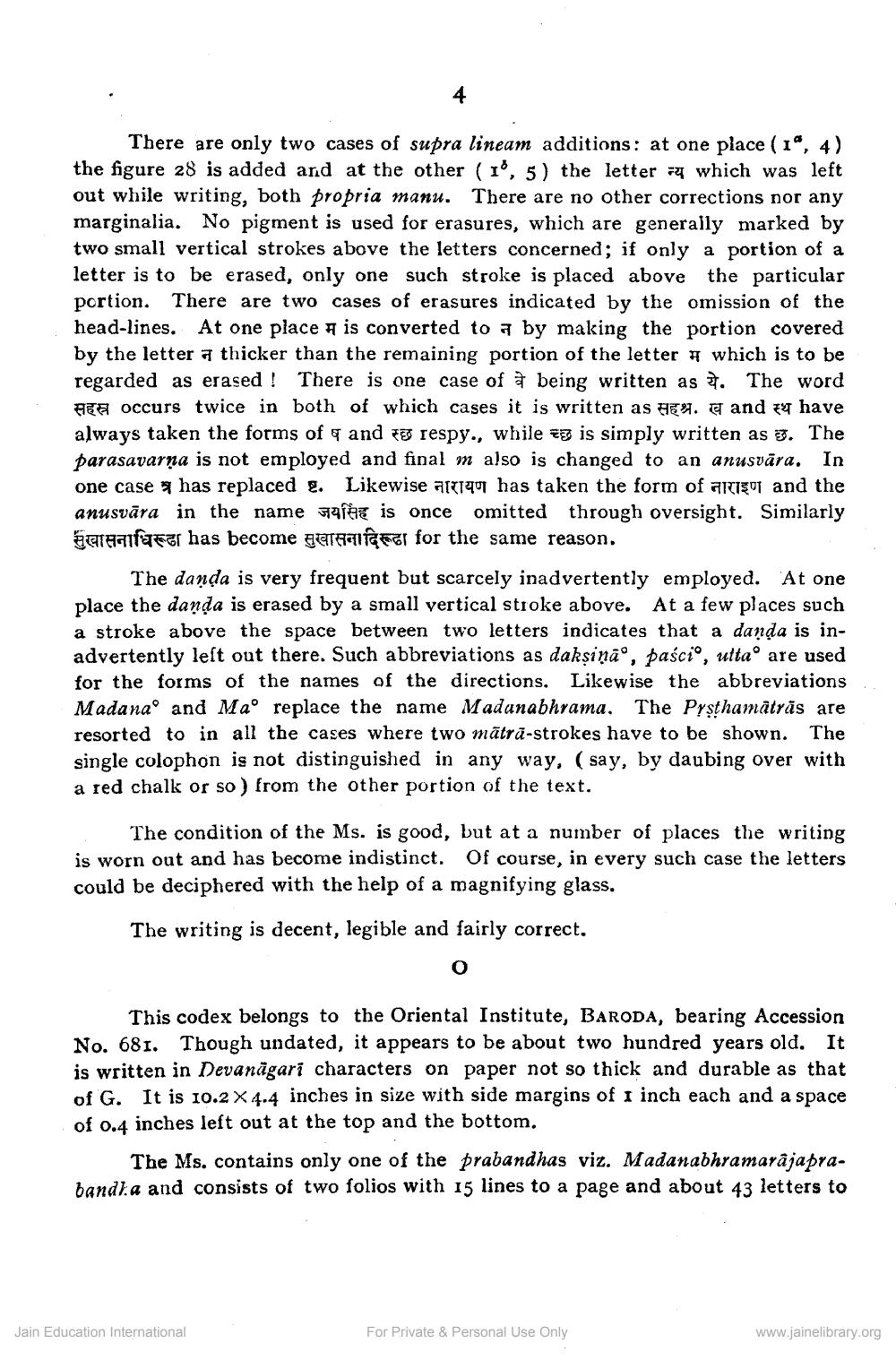________________
There are only two cases of supra lineam additions: at one place (1, 4) the figure 28 is added and at the other (1, 5) the letter which was left out while writing, both propria manu. There are no other corrections nor any marginalia. No pigment is used for erasures, which are generally marked by two small vertical strokes above the letters concerned; if only a portion of a letter is to be erased, only one such stroke is placed above the particular portion. There are two cases of erasures indicated by the omission of the head-lines. At one place is converted to a by making the portion covered by the letter a thicker than the remaining portion of the letter regarded as erased! There is one case of being written as सहस्र occurs twice in both of which cases it is written as सहश्र ख and स्थ have always taken the forms of and respy., while is simply written as . The parasavarna is not employed and final m also is changed to an anusvāra. In one case has replaced g. Likewise a has taken the form of a anusvāra in the name af is once omitted through oversight. सुखासनाधिरूढा has become सुखासनादिरूढा for the same reason.
which is to be . The word
and the Similarly
At one
The danda is very frequent but scarcely inadvertently employed. place the danda is erased by a small vertical stroke above. At a few places such a stroke above the space between two letters indicates that a danda is inadvertently left out there. Such abbreviations as dakṣina, paści°, utta° are used for the forms of the names of the directions. Likewise the abbreviations Madana and Ma° replace the name Madanabhrama. The Prṣṭhamatrās are resorted to in all the cases where two mātrā-strokes have to be shown. The single colophon is not distinguished in any way, (say, by daubing over with a red chalk or so) from the other portion of the text.
The condition of the Ms. is good, but at a number of places the writing is worn out and has become indistinct. Of course, in every such case the letters could be deciphered with the help of a magnifying glass.
The writing is decent, legible and fairly correct.
O
This codex belongs to the Oriental Institute, BARODA, bearing Accession No. 681. Though undated, it appears to be about two hundred years old. It is written in Devanagari characters on paper not so thick and durable as that of G. It is 10.2 X 4.4 inches in size with side margins of 1 inch each and a space of 0.4 inches left out at the top and the bottom.
The Ms. contains only one of the prabandhas viz. Madanabhramarâjaprabandha and consists of two folios with 15 lines to a page and about 43 letters to
Jain Education International
For Private & Personal Use Only
www.jainelibrary.org




